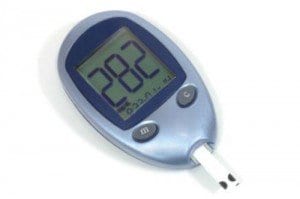 The Anemic Cycle of an Impaired Kidney: One of the problems most often associated with diabetes is a decrease in kidney function and disease that often accompanies kidney decline. It appears the kidneys may have more responsibility for good health than you may have thought.
The Anemic Cycle of an Impaired Kidney: One of the problems most often associated with diabetes is a decrease in kidney function and disease that often accompanies kidney decline. It appears the kidneys may have more responsibility for good health than you may have thought.
A recent report from the National Anemia Action Council suggests, “Persons with diabetes and hypertension are at risk for kidney disease which can be progressive, leading to reduced kidney function and even kidney failure. One of the consequences of reduced kidney function can be anemia and increased risk for cardiovascular disease and events.”
The Cycle
- Weight. As we gain weight added stress is put on the kidneys – damage can then develop.
- Erythropoietin Reduction. This hormone is created in the kidneys, but can be reduced dramatically as diabetes develops. MedicineNet.com says, “The kidney cells that make erythropoietin are specialized so that they are sensitive to low oxygen levels in the blood that travels through the kidney. These cells make and release erythropoietin when the oxygen level is too low. The low oxygen level may indicate anemia, a diminished number of red blood cells, or hemoglobin molecules that carry oxygen through the body.”
- Red Blood Cell Production. With a decrease in erythropoietin red blood cells are at risk. Erythropoietin is responsible for developing these cells with a destination of the bone marrow.
- Anemia. As red blood cells decrease anemia can develop.
- Heart Conditions. As anemia develops it can place a strain on your heart and other organs.
For those who don’t know what anemia is MedicineNet.com describes this as the, “Condition of having less than the normal number of red blood cells or less than the normal quantity of hemoglobin in the blood. The oxygen-carrying capacity of the blood is, therefore, decreased.”
Anemia.org suggests, “There are several complications that can emerge over time with diabetes and the associated elevated blood sugar levels including CKD (Chronic Kidney Disease), hypertension and cardiovascular disease. Additionally, diabetic retinopathy and diabetic neuropathy are prevalent in patients who have had diabetes for many years. Many complications, either directly or indirectly, may contribute to anemia and worsening of clinical outcomes for patients with diabetes.”
Essentially this cycle means that the kidneys become increasingly incapable of delivering the hormone that helps create adequate red blood cells. With a lack of those cells hypertension, heart issues and optical and kidney issues can become a problem for the diabetic. This is often why diabetics have an iron deficiency.
The good news is medical science can provide management goals that can work to keep red blood cells in balance, but this needs to be monitored in conjunction with your doctor.
If you are not diabetic you may be wondering how it is possible to determine if you may be at risk. Anemia.com offers the following checklist.
At-risk for Pre-diabetes & Diabetes
- Family history of diabetes
- Cardiovascular disease
- Overweight or obese state
- Sedentary lifestyle
- Latino/Hispanic, Non–Hispanic Black, Asian American, Native American, or
- Pacific Islander ethnicity
- Previously identified impaired glucose tolerance or impaired fasting glucose
- Hypertension
- Increased levels of triglycerides, low concentrations of high-density lipoprotein cholesterol, or both
- History of gestational diabetes
- History of delivery of an infant with a birth weight greater than 9 pounds
- Polycystic ovary syndrome
- Psychiatric illness (Source: Anemia.org)
If you are a diabetic and you just don’t feel like your normal self it is possible your red blood cell count is low. Check with your doctor to get the help you need to get back on track.
 Warning Signs Of High Blood Sugars: Controlling high blood sugar is vital for maintaining a diabetic’s lifestyle. This process may be difficult to achieve. When an individual is first introduced that they have a problem, they are then given
Warning Signs Of High Blood Sugars: Controlling high blood sugar is vital for maintaining a diabetic’s lifestyle. This process may be difficult to achieve. When an individual is first introduced that they have a problem, they are then given